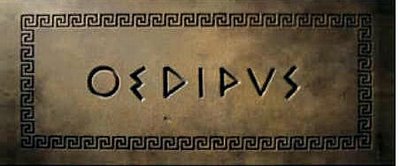
Tuesday morning's
Salon.com reviews neuroscientist
Daniel Levitin's new book This Is Your Brain on Music: The Science of a Human Obsession (to access the complete article for free, play the brief advertisement). In it, Levitin explains how music represents an essential step in human evolution, but along the way, he explains some other musical mysteries, too.
One such is his explanation of why the music which we love as teenagers stays with us as no other music does. Salon.com reviewer Farhad Manjoo explains Levitin's theory:
Humans prefer music of their own culture when they're toddlers, but it's in our teens that we choose the specific sort of music that we'll love forever. These years, Levitin explains, are emotional times, "and we tend to remember things that have an emotional component because our amygdala and neurotransmitters act in concert to 'tag' the memories as something important." In addition, our brains are undergoing massive changes up until the teen years -- after that, the brain structure becomes more fixed, and it begins to prune, rather than grow, neural connections. Consequently it's in our teens that we're most receptive to new kinds of music (in much the same way it's easier to learn a new language when you're young than when you're old).
Another musical mystery that Levitin tackes has the delightful German name
ohrwurm or
earworm. That's the experience of having an annoying fragment of music stuck in your head: "Alas, Levitin says relatively little research has been done on the phenomenon -- all we really know is that musicians and people with obsessive compulsive disorder are more prone to getting earworms, and that for most people it's small bits of songs, rather than entire songs, that we keep repeating."
You can read the entire review at
Salon.com.
Wired News has an interview with Levitin at
Music Makes Your Brain Happy.
 Science Magazine has published its 2006 Visualization Challenge Winners, and among them--as 2nd place winner in the Illustration division-- is this version of Leonardo da Vinci's Vitruvian Man (first drawn more than 500 years ago). Biology teacher Caryn Babaian of Bucks County Community College in Newtown, Pennsylvania,
Science Magazine has published its 2006 Visualization Challenge Winners, and among them--as 2nd place winner in the Illustration division-- is this version of Leonardo da Vinci's Vitruvian Man (first drawn more than 500 years ago). Biology teacher Caryn Babaian of Bucks County Community College in Newtown, Pennsylvania,


















 One can also personalize Intute with
One can also personalize Intute with 











 Each August, the faculty of Beloit College releases its
Each August, the faculty of Beloit College releases its 







 ms.dsk is reading
ms.dsk is reading  Rob Koelling is reading
Rob Koelling is reading  S. Renee Dechert is reading
S. Renee Dechert is reading  Mary Ellen Ibarra-Robinson is reading
Mary Ellen Ibarra-Robinson is reading  Bill Hoagland is reading
Bill Hoagland is reading  Jennifer Sheridan is reading
Jennifer Sheridan is reading  Robyn Glasscock is reading poetry by
Robyn Glasscock is reading poetry by  Susan Watkins is reading
Susan Watkins is reading